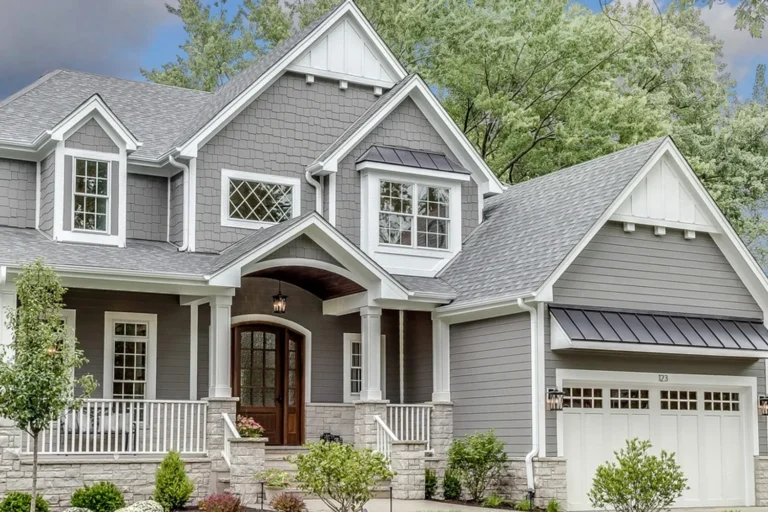Let’s talk about home appraisals. You’ve probably heard the term a lot when people are buying or selling a house, it sounds pretty serious, doesn’t it? But here’s the thing: most people don’t really know what actually happens during a home appraisal or why it’s such a big deal.
A home appraisal is basically the moment of truth. It’s where someone trained, licensed, and totally neutral walks into your home and decides how much it’s worth – not emotionally, not personally, just factually.
That number they come up with? It can decide everything. Whether the bank gives you a loan. Whether your buyer moves forward. Whether your sale even closes.
So, if you’ve ever thought a home appraisal is just someone popping in, taking a quick look, and throwing out a number, it’s really not that simple. There’s a lot more happening behind the scenes than most people realize.
What a Home Appraisal Actually Is
A buyer loves your home. You both agree on a price. The lender nods, but before handing over that big loan, they want to know, is this house really worth it? That’s where the home appraisal comes in.
A professional appraiser visits, checks the place from top to bottom, studies recent sales nearby, and compares your home to others like it. They look at every detail like size, condition, updates, layout, even the street you’re on.
Then they put all of that together into one report. At the end, there’s a number – the appraised value. That’s what the market says your home is worth right now.
Why It Matters So Much
- If you’re buying, your lender uses it to decide how much money they’re comfortable giving you.
- If you’re selling, it confirms whether your asking price is realistic or a little too high for the market.
Let’s say your buyer offers $400,000. But the appraisal comes in at $370,000. The lender? They’ll only lend based on that $370,000 value. Suddenly, someone has to make up the difference, or the deal falls apart. That’s why home appraisals aren’t just paperwork. They’re a checkpoint that keeps everyone honest, buyer, seller, and bank alike.
What Happens During a Home Appraisal
When the appraisal gets scheduled, here’s how it usually goes:
- The appraiser visits your property.
They’ll look at the exterior, step inside, take photos, measure rooms, and make notes. Don’t worry, they’re not judging your décor. They care about structure, layout, and condition.
- They compare your home to others.
The appraiser finds recent sales of homes like yours nearby. These are called comps.
- Adjustments come next.
Maybe your home has a renovated kitchen or a bigger backyard, they’ll add value for that. But if it needs roof repairs or sits on a busy street, they’ll adjust downward.
- The report gets written.
After crunching the numbers, the appraiser finalizes a detailed report showing how they arrived at the value. And that’s it, a few days later, you get the result.
Getting Ready for It
You can’t control the market, but you can control how your home shows up during that visit.
Here’s what genuinely helps:
- Clean, organized spaces. It’s not about impressing anyone; it’s about showing care and upkeep.
- Fix what’s broken. Small things like a loose handle, chipped wall paint can quietly suggest neglect.
- Gather receipts. If you’ve added a new roof, remodeled a bathroom, or upgraded systems, show proof.
- Keep the exterior neat. The first look from the street matters. Mowed lawn, clear walkway, fresh entryway, it sets the tone.
- Make everything accessible. Basements, attics, garages, appraisers need to see them all.
These little things don’t just make your home look better, they help the appraiser understand its real condition and value.
What Can Affect Your Home Appraisal Value
There are patterns appraisers always follow, no matter where you live. The main ones are:
- Location. What’s around you like schools, stores, safety, traffic shapes value.
- Condition. The better maintained your home, the stronger your appraisal will be.
- Size and layout. More usable space means higher worth, but awkward designs can pull it down.
- Upgrades. Modern kitchens, renovated bathrooms, and energy-efficient systems can bump your number, but only if they fit what buyers in your area value.
- Market trends. If local prices are climbing or falling, your appraisal follows that curve.
Appraisers weigh these together to get one balanced picture of your property’s true market worth.
When the Appraisal Comes in Low
It happens, and when it does, don’t panic.
If the home appraisal value comes in lower than expected, start by reading the report. Sometimes, details get missed, maybe an extra bathroom wasn’t noted or the finished basement wasn’t valued. You can also:
- Provide stronger comparables. Show nearby homes that sold for more but weren’t included.
- Highlight improvements. Prove updates with receipts or before-and-after pictures.
- Ask for a review. Lenders sometimes allow a reconsideration of value if solid evidence exists.
- Request a second appraisal. Another professional may reach a different conclusion.
A low number doesn’t always mean your home lost value, it might mean the market’s shifting or that your upgrades weren’t fully reflected yet.
Clearing Up Common Myths
Let’s set the record straight on a few things people often get wrong:
- An appraisal isn’t an inspection.
The inspector checks for issues. The appraiser checks for value.
- Not every upgrade adds full value.
Spending $20,000 on a new kitchen doesn’t automatically raise your value by $20,000. It depends on the neighborhood and demand.
- Appraisers aren’t out to lowball.
Their job is neutrality. They’re not trying to favor or hurt anyone.
- The market beats emotion.
Loving your home doesn’t make it worth more. Buyers pay based on what’s trending and available. Once these myths are out of the way, the process makes a lot more sense.
Before Appraisal Day – Quick Reminders
- Have every light working and room accessible.
- Make a short list of upgrades and dates for easy reference.
- Tidy up the outside like curb appeal still counts.
- Be polite and available but don’t hover.
- Keep pets away so the appraiser can focus.
That’s all it takes, small touches that show your home in its best shape.
Conclusion:
A home appraisal is the moment where your property’s story gets told in numbers. Every corner, upgrade, and square foot adds a line to that story.
When your home looks cared for and well-documented, the appraiser sees it. When the market supports your price, the report reflects it.
So don’t fear the appraisal. Prepare for it. Because when that number lands right, everything else in the sale or refinance starts to fall perfectly into place.
Frequently Asked Questions
How long is an appraisal valid?
Usually around 90 days, depending on how fast the market moves.
Can I reuse an appraisal for another lender?
Not always, most lenders prefer their own independent appraiser.
How much does a home appraisal cost?
Between $300 and $600 for most homes, though larger properties can cost more.
Who pays for it?
Buyers usually do, unless it’s for refinancing, then the homeowner pays.
How long does it take?
Typically a week from start to finish.
Can I influence the appraiser?
Not directly, but providing clear, factual information helps them see your home accurately.
What if the appraisal is higher than expected?
That’s great news, it gives you instant equity or more room to negotiate.
Are online value estimates the same as appraisals?
No, online tools use algorithms. Appraisals involve professional judgment and physical inspection.
Can I appeal an appraisal?
Yes, if you can show mistakes or stronger comparable sales.
What’s the biggest mistake homeowners make before an appraisal?
Ignoring small fixes or assuming upgrades automatically raise the value by their full cost.


